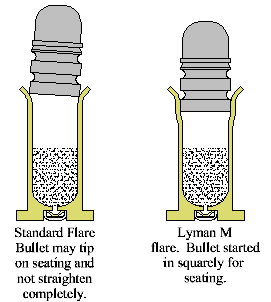I did not notice any unburnt powder kernels. It was the dirtiest rifle I've ever cleaned though. I ran dozens of patches with M-Pro7 on a wire brush down the barrel, and kept coming up up dirty. Never remember having to clean a barrel this much, as I always clean each time I shoot.
Mag primers - I guess I would consider switching to them, but I'll first try loading these hotter, as I can stand the kick ok - more of a shotgun type shove, and I use a big shoulder pad (Couldn't shoot 30 rounds from a bench without it).
Tilting the barrel up or down before firing should tell me if there's any need to add fluff to keep the charge back in place. I'll give that a try and report back.
Mag primers - I guess I would consider switching to them, but I'll first try loading these hotter, as I can stand the kick ok - more of a shotgun type shove, and I use a big shoulder pad (Couldn't shoot 30 rounds from a bench without it).
Tilting the barrel up or down before firing should tell me if there's any need to add fluff to keep the charge back in place. I'll give that a try and report back.

